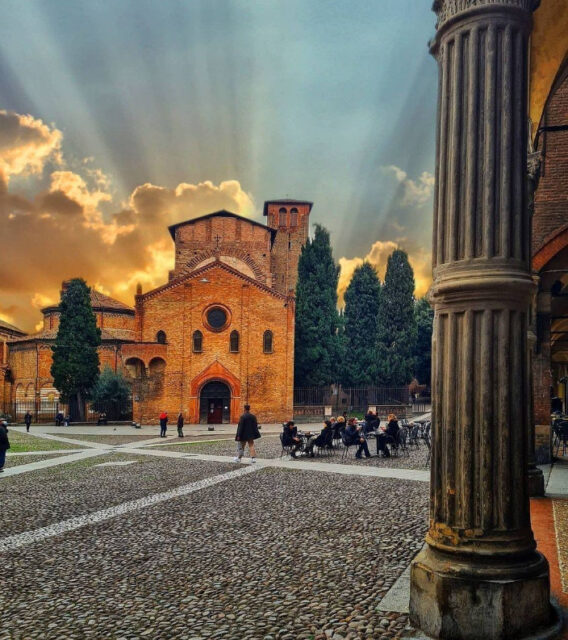Basilica Santuario Santo Stefano
Basilica Santuario Santo Stefano . The monumental complex of Santo Stefano, or the “seven churches” of Bologna, is the “cradle and heart of the Bolognese Church”. During the visit you will come across the Church of the Crucifix, the Crypt (only through the stained glass windows), the Basilica of the Holy Sepulchre, the Church of Vitale and Agricola, the “courtyard of Pilate”, the Church of the Trinity, the medieval cloister, the museum and the Church called “della Benda”.
Tradition indicates San Petronio as the creator of the basilica, which was supposed to imitate the Holy Sepulcher of Jerusalem, built over a pre-existing temple dedicated to Isis. However, the origins of the buildings are very ancient: the church of San Giovanni Battista or of the Holy Crucifix dates back to the eighth century, the church of the Holy Sepulcher to the fifth century: here in a cell surmounted by an altar with pulpit was the tomb of San Petronius, bishop of Bologna from 431 to 450 and protector of the city. The relics have been transferred to the church of San Petronio since 2000. The church of Santi Vitale ed Agricola dates back to the 4th century and houses the sarcophagi of the two martyrs.



The numerous restorations carried out around 1880 and in the first decades of the 20th century eliminated the various additions (except for the 17th century “cappellone”), but also changed the ancient face of the complex. Above all, the Holy Garden or Courtyard of Pilate, originally with three columns and four arches on each side, and the Church of the Trinity were clumsily altered. The courtyard was enlarged by adding an arch setting back the facade of the “Martyrium” (which originally should have been the apse and not the facade). Unfortunately, these modifications were based on knowledge of the current forms of the Holy Sepulcher in Jerusalem, rebuilt by the Crusaders, without however knowing that in reality the complex of Santo Stefano was instead inspired by the original and lost one erected by Constantine in the 4th century.
From Piazza Santo Stefano you have an overview that includes the facades of the three churches of the Crucifix, the Sepulcher, and the Saints Vitale and Agricola. Despite the different typologies, the group presents numerous interventions, restorations, and refurbishments, a consolidated stylistic homogeneity that make it the most interesting Romanesque monument in the city of Bologna. In the spaces outside the basilica, there were two medieval sarcophagi that housed the remains of the first bishops of the Church of Bologna. After the restoration of the paving of the square, in 1994, these sarcophagi were placed in the garden adjacent to the right side of the Church of the Crucifix.


Santo Stefano Museum collection includes a series of precious cult objects, such as an elaborate ivory pastoral staff, reliquaries and cassocks, as well as some works of art no longer exhibited in the seven churches; one of these, of particular interest, is a high-relief panel from the Lombard era which represents Jesus between Saints Vitale and Agricola.
A curiosity devoid of artistic value but of a certain historical value is given by the bandage which, according to legend, was worn by the Madonna herself. Among the paintings we highlight: Saints by Simone dei Crocifissi, from one or more dismembered polyptychs; San Petronio and stories from his life, attributed to Michele di Matteo; the reliquary of the head of San Petronio, goldsmith’s work by Jacopo Roseto from 1380; Madonna with Child and San Giovannino painted by Innocenzo da Imola in the 16th century; the fresco of the Massacre of the Innoc. More

